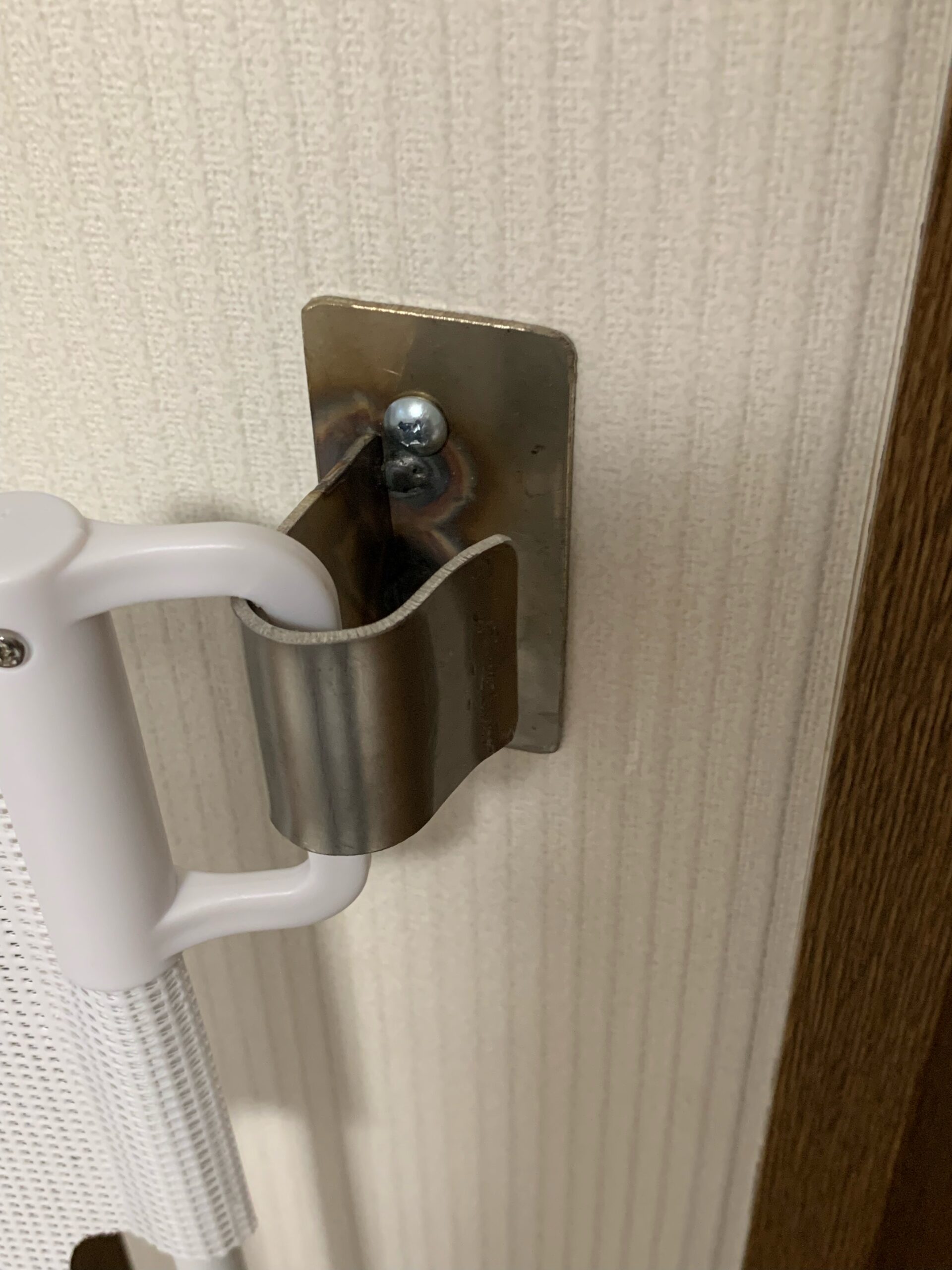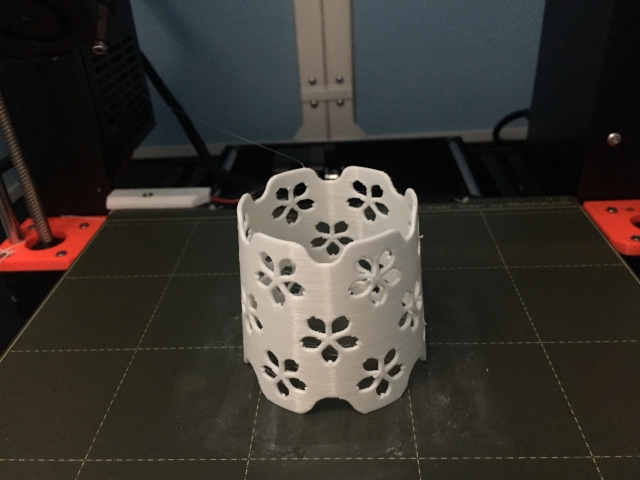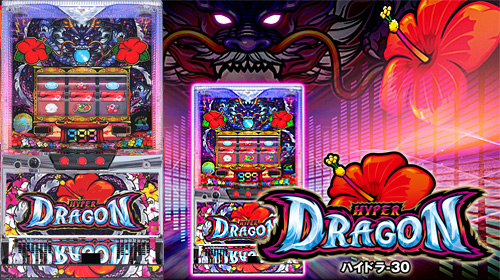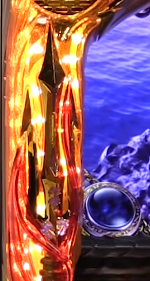“Play-to-earn” and Bullshit Jobs
In Bullshit Jobs: A Theory, David Graeber makes the case that a sizable chunk of the labour economy is essentially people performing useless work, as a sort of subconscious self-preservation instinct of the economic status quo. The book cites ample anecdotal evidence that people perceive their own jobs as completely disconnected from any sort of value creation, and makes the case that the ruling class stands to lose from the proletariat having extra free time on their hands. It’s a thoughtfully presented case, but when I read the book a few years back, I was skeptical that any mechanism to create bullshit jobs could arise from a system as inherently Darwinian as capitalism.
I’ve recently been exploring the themes around web3 to see if there’s a “there” there, and Graeber’s book has been on my mind again. One of the most apparently successful examples of web3 that people point to, aside from art NFTs, is so-called play-to-earn games. The most successful of these is Axie Infinity, a trade-and-battle game reminiscent of Pokemon.
In a crypto economy crowded with vapourware and alpha-stage software, Axie Infinity stands out. Not only has it amassed a large base of users, the in-game economy has actually provided a real-world income stream to working-class Filipinos impacted by the pandemic. Some spend hours each day playing the game, and then sell the in-game currency they earn to pay their real-world bills. That’s obviously a good thing for them, but it also appears to be a near-Platonic example of Graeber’s definition of a bullshit job.
Gamers have a word, grinding, to describe repetitive tasks undertaken to gain some desired in-game goal, but are not fun in themselves. This seems to sum up players’ experience with Axie Infinity, which is often described as work or a chore. For example, reddit user am_enjellyka:
It still is work if you think about, at least that’s how I treat it. I don’t look forward to doing it, I don’t enjoy it, but work is work. The only thing I Iook forward to is cashing out and that’s it. 1-2hrs of my days to get some money is fine by me
In fact, in spite of the game being heralded as an example of how play-to-earn is the future of gaming (a message received by giants EA and Ubisoft), it’s hard to find any reviews on Axie Infinity as a game rather than as an income stream or speculative investment, for which there are plenty. As Arianna Simpson (of a16z, one of Axie Infinity’s most prominent backers) puts it:
[It’s] actually not at all dissimilar to the real-world economy. I might be wealthier and I might pay someone to do something I don’t want to do and somebody might, in exchange, pay me to do something they don’t want to do.
But it is dissimilar in an important way: the “thing I don’t want to do” is completing tasks contrived by a game designer. The very existence of these tasks, and people willing to pay for them, might be the purest example of a Graeber-esque Bullshit Job I’ve encountered. It’s worth understanding who is ultimately paying for this labour, and why.
People have made money by selling virtual goods acquired in-game at least as far back as Second Life in 2005. Axie Infinity is novel in two ways, which are worth exploring separately.
It elevated the ability to earn an income stream through the game to a core feature, coining play-to-earn as a new game genre.
It uses NFTs to represent in-game items, so the economy is (ostensibly) decentralized.
うそつきジョブの中で。デイヴィッド・グレーバーは、労働経済のかなりの部分が、経済的現状の潜在的な自己防衛本能のようなものとして、本質的に役に立たない仕事をしている人々であることを論証している。この本では、人々は自分の仕事があらゆる種類の価値創造から完全に切り離されていると認識しているという十分な逸話的証拠を引用し、支配階級はプロレタリアートが余分な自由時間を持つことによって失う立場にあるということを主張している。しかし、数年前にこの本を読んだとき、私は、資本主義のように本質的にダーウィン的なシステムから、でたらめな仕事を作り出すメカニズムが生まれるとは思えない、と懐疑的だった。
最近、Web3というテーマで、そこに「ある」ものがあるかどうかを探っているのですが、Graeberの本がまた気になっています。アートNFTを除けば、人々が指摘するWeb3の最も明らかに成功した例のひとつは、いわゆるPlay-to-Earnゲームである。その中でも最も成功しているのが、ポケモンを彷彿とさせるトレード&バトルゲーム「Axie Infinity」です。
暗号経済の中で、「Axie Infinity」はポケモンやアルファ段階のソフトウェアがひしめく中、際立っています。多くのユーザーを集めただけでなく、ゲーム内の経済活動は、パンデミックの影響を受けたフィリピンの労働者階級に現実世界での収入源を提供しているのだ。毎日何時間もゲームをプレイし、稼いだゲーム内通貨を売って現実世界の支払いを済ませる人もいる。これは明らかに彼らにとって良いことだが、Graeberが定義した「くだらない仕事」のプラトニックに近い例にも見える。
ゲーマーには、ゲーム内の目標を達成するために行われる反復作業を表す「グラインディング」という言葉があるが、それ自体は楽しいものではない。これは、しばしば仕事や雑用と表現されるAxie Infinityでのプレイヤーの経験を要約しているように思えます。例えば、redditユーザーのam_enjellykaさん。
考えてみればやはり仕事です、少なくとも私はそう扱っています。私はそれを行うことを楽しみにしていない、私はそれを楽しんでいない、しかし、仕事は仕事です。楽しみはキャッシュアウトだけです。お金を得るために1日1〜2時間でもいいんです。
実際、「プレイ・トゥ・アーニング」がいかにゲームの未来であるかを示す例として謳われているにもかかわらず(大手EAやユービーアイソフトが受け取ったメッセージ)、「アクシーインフィニティ」については、収入源や投機的投資としてではなく、ゲームとしてのレビューを見つけるのは困難だ(たくさんある)。アリアナ・シンプソン(a16zの、Axie Infinityの最も著名な支援者の一人)が言うように、だ。
[これは)現実の経済とまったく似ていない。私はより裕福になり、私がやりたくないことをするために誰かにお金を払うかもしれませんし、誰かがそれと引き換えに、彼らがやりたくないことをするために私にお金を払うかもしれないのです。
しかし、重要な点で異なっている。「やりたくないこと」とは、ゲームデザイナーによって仕組まれたタスクをこなすことである。このようなタスクが存在し、それにお金を払う人たちがいるということは、私が出会った中で最も純粋な、グレイバー的な「うそつき仕事」の例かもしれない。このような労働に対して、最終的に誰が、そしてなぜお金を払っているのかを理解することは価値があります。
少なくとも2005年のSecond Lifeの時点では、ゲーム内で入手したバーチャルグッズを販売することでお金を稼いでいた。Axie Infinityは、2つの点で斬新であり、別々に検討する価値がある。
アクシーインフィニティは、ゲームを通じて収入を得るという機能を中核に据え、「遊んで稼ぐ」という新しいゲームジャンルを確立した。
ゲーム内のアイテムをNFTで表現しているため、経済は(表向きは)分散化されている。
Play-to-earn
In contrast to other games in which in-game economies have developed, Axie Infinity puts players’ opportunity to make an income and transfer it to the real world at the forefront. As they put it in their FAQ, what sets Axie Infinity apart is an ethos:
We believe in a future where work and play become one.
We believe in empowering our players and giving them economic opportunities.
These “economic opportunities” are essentially a wealth transfer from new players to established ones. Gameplay requires the purchase of three Axies, which currently cost in the hundreds of US dollars each. Players who buy in treat this as an investment, since it’s a necessary buy-in in order to work in the game. This naturally raises questions about sustainability, a question which the game’s creators have addressed:
Jeff [Zirlin, co-founder of of Sky Mavis]: So one of the ways to look at it is right now, Axie is a little bit of a growth-dependent economy, just like any emerging market nation. It is a little bit dependent on capital inflows. But long term, it’s really important for us to have players that are in the economy spending because they think that the game is really fun or that they see ways to trade, like, money for power or respect.
There is some logic to the idea that the game could sustain a mix of players, some of whom are net recipients of capital and some of whom are net contributors who are in it for a good time. This is how other in-game economies have sustained themselves. I’m wholly unconvinced that Axie Infinity is headed in that direction, frankly, because it just doesn’t look fun enough that people will pony up upwards of $1,000 to play it for its own sake. Informal polls, unscientific as they are, seem to bear this out.
(As for power and respect, well. I’m old enough to remember the momentary schoolyard respect associated with earning a rare Pokemon in the original GameBoy game, but it’s not a kind of respect that can be bought and sold.)
By blurring the line between “player” and “worker”, the game has effectively built a Ponzi scheme with built-in deniability. Sure, some users will be net gainers and other users will be net losers, but who am I to say the net losers aren’t in it for the joy of the game? The same could be said about online poker or sports betting, to be sure, but we would rightfully recoil if those were positioned as a way to lift people out of poverty.
In a CoinDesk op-ed, Leah Callon-Butler takes on people who point out the suspiciously Ponzi-like economic structure of the game:
I’ve seen a few Twitter-based armchair critics label the pursuit of SLP, Axie’s battle reward token, as meaningless grinding. It’s understandable how they’d arrive at this conclusion, where people are familiar only with the exploitative business models of the traditional gaming industry and haven’t yet grasped how decentralized gaming is different. But it also reveals a lack of consideration for those who have found real value and purpose in these games. Many Axie players have been grinding much harder in their day jobs and getting much less for it.
You wouldn’t know it from the article, but Callon-Butler is the director of Emfarsis, the same agency hired months prior to make a feel-good documentary about Axie Infinity’s growth in the Philippines, by Yield Guild Games, a major player in Axie’s rise in the Philippines. In fact, between the documentary and a series of CoinDesk pieces (one of which at least does disclose the conflict), Emfarsis’ telling of the story has largely been the one repeated (rather uncritically) by mainstream Western media like CNBC.
This polished narrative ignores the other side of the equation. Since Filipinos are the largest growth market for Axie Infinity, they must also be a major source of money flowing into the system. Instead of being a net provider of jobs and capital, it appears to just be redistributing the same wealth between Filipinos, and collecting a 4.25% cut for the service.
プレイ・トゥ・アーンの実現
ゲーム内経済が発達した他のゲームとは対照的に、「Axie Infinity」は、プレイヤーが収入を得、それを現実世界に還元する機会を第一に考えています。FAQにあるように、Axie Infinityを特徴づけているのは、その理念である。
私たちは、仕事と遊びが一体となる未来を信じています。
プレイヤーに力を与え、経済的な機会を与えることを信条としています。
この「経済的機会」とは、基本的に新規プレイヤーから既存プレイヤーへの富の移転である。ゲームプレイには、現在1台数百ドルするAxieを3台購入する必要があります。購入したプレイヤーは、ゲーム内で活動するために必要な買い物となるため、これを投資として扱います。このため、当然ながら持続可能性についての疑問が生じますが、この点については、ゲームの制作者が対応しています。
ジェフ(『Sky Mavis』の共同創設者、Zirlin)。アクシー』は、他の新興国と同じように、成長に依存した経済です。資本流入に少し依存しているのです。しかし、長期的に見れば、ゲームが楽しいから、あるいはお金と権力や尊敬を交換できるから、という理由で経済活動をしているプレイヤーがいることがとても重要なのです。
このゲームには、資本の純受領者と、楽しい時間を過ごすための純貢献者が混在しているという論理があります。他のゲーム内経済もこのように維持されてきました。率直に言って、Axie Infinityがそのような方向に向かっているとは到底思えません。なぜなら、それ自体のために1000ドル以上を支払ってプレイするほど楽しそうに見えないからです。非科学的なものですが、非公式の世論調査がこれを裏付けているようです。
(権力と尊敬については、まあ。私は古い人間なので、初代ゲームボーイでレアポケモンをゲットしたときの、校庭での一瞬の尊敬を覚えているが、それは売買できるような尊敬ではない)。
プレイヤー」と「労働者」の境界線を曖昧にすることで、このゲームは事実上、否認可能なねずみ講を構築しているのである。確かに、あるユーザーは純増し、別のユーザーは純減する。しかし、純減したユーザーがゲームの楽しみのためにやっていないと、誰が言えるだろうか?確かにオンラインポーカーやスポーツベッティングについても同じことが言えるが、それらが人々を貧困から救う方法として位置づけられるとしたら、私たちは当然反発するだろう。
CoinDeskの論説で、Leah Callon-Butlerは、ゲームの怪しげなねずみ講的な経済構造を指摘する人たちを取り上げている。
Twitterで、Axieの戦闘報酬トークンであるSLPの追求を無意味な研磨とレッテルを貼る腕利きの批評家を何人か見たことがある。伝統的なゲーム業界の搾取的なビジネスモデルしか知らない人たちが、分散型ゲームとどう違うのかをまだ理解していない彼らが、この結論に至るのは理解できることです。しかし、このようなゲームに本当の価値や目的を見出した人たちに対する配慮のなさも露呈している。Axieのプレイヤーの多くは、本業に精を出し、その対価として得るものが少ない。
この記事からはわからないが、カロン-バトラーはEmfarsisのディレクターであり、フィリピンにおけるAxie Infinityの成長の主要な担い手であるYield Guild Gamesが、数ヶ月前に依頼した、フィリピンにおけるAxieの成長に関する好意的なドキュメンタリー制作と同じ会社である。実際、このドキュメンタリーとCoinDeskの一連の記事(そのうちの1つは少なくとも紛争を明らかにしている)の間で、Emfarsisが語るストーリーは、CNBCなどの欧米の主流メディアによって(むしろ無批判に)繰り返されてきたものである。
この洗練された物語は、方程式の反対側を無視している。フィリピン人はアクシー・インフィニティにとって最大の成長市場であるため、システムに流れ込むお金の主要な供給源にもなっているはずだ。雇用と資本の純然たる提供者である代わりに、フィリピン人の間で同じ富を再分配し、サービスのために4.25%のカット率を徴収しているだけに見えるのである。
NFT Economy
Axies, the tradable characters at the center of Axie Infinity, are tradable as NFTs outside of the official Axie Infinity game. In theory, this creates a sense of ownership that doesn’t exist in other games, since nobody can take away your Axie.
Kind of. The thing is, Axies are valued as they are because they can be used to play the game. Axie Infinity’s creator, Sky Mavis, can block individual Axies from the game, thereby making them useless for their primary purpose. You can still look at them, and even trade them on platforms like OpenSea, but at a diminished value since without the game they’re basically just an NFT of a picture of an Axie.
Not only can Axies be banned, the rules of battle that govern the value of their skills can change. As co-creator Aleksander Leonard Larsen told Odd Lots:
“[…] right now a lot of the game logic is off-chain, so that means that we already as a game studio can make many many changes, right. We can also, let’s say if we want to buff certain skills, make them stronger, weaker, we can do that of course. And we’re very transparent [about it]”
In fact, the trajectory of the game has been to become less decentralized over time:
“When we created Axie, pretty much everything was on-chain […] and we were following that decentralized ethos. Over time what we realized is that building a product based on these very heavy constraints is almost impossible, especially if you want to reach the masses. […] We had to sacrifice parts of decentralization.”
This is worth noting, because it is in direct contradiction to the narrative around why web3 games are special. As the World Economic Forum put it:
The true innovation lies in the decentralized integrity and security of these digital items, which—for the first time—can transcend the traditional proprietary, custodial ownership and discretion of a company or even government. As an example, instead of relying on the permission or rules of publishers or other third parties, in game resources from play-to-earn games can be sold freely on marketplaces both inside and outside of the game.
Recently, countless examples of communities have sprung up, highlighting the potential of play-to-earn games in building a new economy. Most notably, a video game called ‘Axie Infinity’ shows that this is more than just a pipe dream.
Or as Chris Dixon more concisely puts it:
Web Two was don’t be evil. Web Three is can’t be evil. You bake it into the code that you can’t be evil.
But underneath a coat of web3 paint, users are still subject to Sky Mavis’ whims, and deal with the same “web2” problems, like getting swept up arbitrarily in ban waves and having to appeal to customer service.
I’ve focused on Axie Infinity because it’s the prominent, genre-defining play-to-earn game. I fully suspect that the pitfalls that it has encountered are ones that all play-to-earn games will eventually encounter. Any sufficiently complex game will come to realize, as Axie Infinity has, that immutable property rights are at odds with the ability to counter abuse. Games that maximize property rights (as Axie Infinity wisely hasn’t) are bound to be overrun with cheaters and bots, which in turn will just bring down the value of in-game assets anyway.
Ultimately, in-game labour is just a re-branding of gameplay designed to be dull enough that rich players will pay to outsource it to poor players. In spite of being presented as the future of work by some venture capitalists, the incentives just don’t make sense. Floors don’t have to be swept in the metaverse unless they’re designed to need sweeping.
Sadly, David Graeber died suddenly last year, and isn’t around to see his theory manifest in so pure a form. But I encourage those championing play-to-earn as the future of work to read his book and ask themselves whether they’re just building his dystopia.
NFTエコノミー
Axie Infinityの中心となるトレード可能なキャラクターであるAxiesは、Axie Infinityの公式ゲーム以外でもNFTとしてトレード可能です。理論上は、誰も自分のアクシーを奪うことができないため、他のゲームにはない所有感を生み出すことができます。
ちょっとだけ。つまり、アクシはゲームをプレイするために使用できるため、そのまま評価されるのです。Axie Infinityの開発者であるSky Mavisは、個々のAxieをゲームからブロックすることができ、それによって本来の目的であるAxieを使えなくすることができます。それでも、Axieを眺めたり、OpenSeaなどのプラットフォームで取引したりすることはできますが、ゲームなしでは基本的にAxieの写真をNFTしただけのものなので、価値は下がります。
アクシーが禁止されるだけでなく、アクシーのスキルの価値を規定する戦闘ルールも変更される可能性があります。共同制作者のAleksander Leonard Larsen氏は、Odd Lotsに次のように語っています。
「現在、ゲームロジックの多くはオフチェーンなので、ゲームスタジオとして多くの変更を加えることができます。例えば、特定のスキルにバフをかけたり、強くしたり弱くしたりすることも、もちろん可能です。そして、我々は非常に透明性があります。
実際、ゲームの軌跡は時代とともに分散化が進んでいます。
「Axieを作った当時は、ほとんどすべてがオンチェーンであり(中略)、その分散型の精神に従っていました。時間が経つにつれて、こうした非常に重い制約に基づいて製品を構築することは、特に大衆にリーチしたい場合には、ほとんど不可能であることに気づかされたのです。[中略)私たちは、分散化の一部を犠牲にしなければならなかったのです。
これは、なぜWeb3ゲームが特別なのか、という話と正反対なので、注目に値します。世界経済フォーラムはこう言っています。
真の革新は、これらのデジタルアイテムの分散化された完全性とセキュリティにあり、それは初めて、企業や政府による従来の所有権や管理権、裁量権を超越することができるのです。例えば、パブリッシャーやその他のサードパーティの許可やルールに依存する代わりに、プレイ・トゥ・アーンのゲーム内リソースは、ゲーム内外のマーケットプレイスで自由に販売することができるのです。
近年、このようなコミュニティが数多く誕生しており、"Play toearn "ゲームによる新たな経済活動の可能性が指摘されています。なかでも、「Axie Infinity」というビデオゲームは、これが単なる夢物語ではないことを示している。
あるいは、クリス・ディクソンがより簡潔に表現しているように。
Web2」は「Don't be evil(悪になるな)」。Web3は "can't be evil "です。悪になれないということをコードに焼き付けるのです。
しかし、web3のペンキの下で、ユーザーはまだSky Mavisの気まぐれにさらされ、禁止令の波に恣意的に巻き込まれ、カスタマーサービスに訴えなければならないなど、同じ「web2」問題に対処しているのです。
私が「Axie Infinity」に注目したのは、それが突出した、ジャンルを定義するプレイ・トゥ・アーンのゲームであるからです。アクシーインフィニティが陥った落とし穴は、すべてのプレイトゥーユアーンゲームがいずれ遭遇するものだと、私は十分に考えています。十分に複雑なゲームであれば、「Axie Infinity」がそうであったように、不変の財産権は乱用に対抗する能力と相反するものであることに気づくはずです。Axie Infinityが賢明にもそうしなかったように)財産権を最大限に利用したゲームは、チーターやボットで溢れかえり、いずれにせよゲーム内資産の価値を下げるだけです。
結局のところ、ゲーム内労働は、金持ちのプレイヤーが金を払って貧しいプレイヤーに委託するほど退屈なゲームプレイを再ブランド化したものに過ぎないのである。一部のベンチャーキャピタルが未来の仕事として提唱しているにもかかわらず、そのインセンティブは意味をなさない。メタバースでは、床掃除が必要なように設計されていない限り、床を掃除する必要はないのです。
悲しいことに、David Graeberは昨年急逝してしまい、彼の理論がこれほど純粋な形で現れるのを見ることはできません。しかし、「Play-to-Earn」を未来の仕事として支持する人たちには、彼の本を読んで、自分たちは彼のディストピアを作っているだけではないか、と自問自答することをお勧めします。
<その他play to earnに関して >
・
Play To Earn!ゲームで稼ぐ?新しい稼ぎ方PtEを遊んでみたよ
ゲームとしては3匹のポケモン(有料、1匹3万円~4万円ぐらい)を戦わせるゲーム!
3匹セットでデッキを組んで。
デイリークエストをこなすと報酬としてSLPというトークンが得られます。これが売れると、今だと1日1500円ぐらいになるみたいです。
初期投資は最低10万~20万程度
デイリークエストやバトルを繰り返して報酬を得て市場で売却する。
2匹をかけあわせて卵を生産して売ることも可能。
ポケモン自体も売却可能。
だから2ヶ月ちょっと続けると原資を抜ける状況が作れるんですよ。
原資抜いたら後は今度はそれが儲けになっちゃいます!!!
ゲームで遊んで稼げる!PlayToEarnじゃん!!!!
と思うかもしれませんが、ポンジスキームに近いものと理解してます。
いずれ崩壊するか、安い価格で成立するものだと思います!
「投資マネー以外のお金が流れ込む仕組み」を最初から作っておくことの重要性です。広告でも良いし、「遊びたい人」や「凄いプレーを見たい人」からお金を取る仕組みでも良いので、投資マネーではないお金(つまり、リターンを求めないお金)が流れ込む仕組みをちゃんと作った上でNFTゲームを作らない限り、それは本質的にはポンジースキームで、いつかは破綻するのです。





